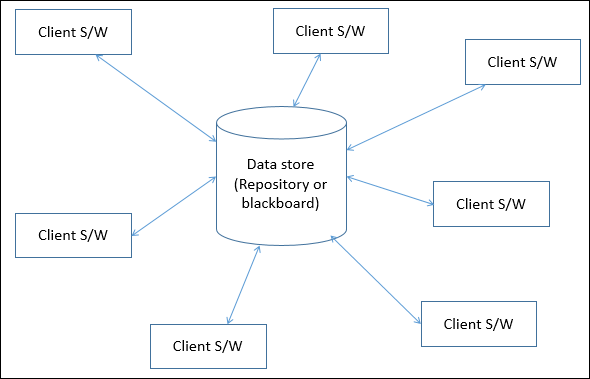Data architecture is a model, or rather rules and standards, that tell us how we should store, organize, and integrate the data that a company collects to make it usable and useful.
In the new era of big data and data science, it is vital for a company to have a centralized data architecture aligned with business processes that adapts to business growth and evolves with technology. A successful data architecture provides clarity in every aspect, enabling processors to work effectively with trusted data and tackle complex business problems.
The right architecture from the data science agency also prepares the organization to quickly seize new business opportunities by leveraging the latest technology, and to improve operational efficiencies by managing complex data and delivering information across the enterprise.
Data architecture is a relatively new discipline. The role of data architect has long fallen to senior business analysts, ETL developers, and data scientists. Today these profiles coexist with another more specialized in data architecture.
Because of this, it is possible that today the data architecture of most companies is not the most correct. Thus, the following common mistakes can be distinguished:
-Companies that process data themselves often have multiple IT departments operating separately, with their own data architecture and standards.
-Applications and processes are built based on individual business requirements without any data architecture standards.
-The role of a data architect is to only focus on a limited number of technical areas and have limited business knowledge of data.
IT projects are managed without considering data architecture in the design phase, so data scientists and engineers code their way without a coherent data management process.
This makes it easy to find siled data systems, gaps between teams, and information silos between departments.
These situations result in poor performance on systems with a lot of gears, long troubleshooting time when a production data problem occurs, no accountability to arrive at the correct solution across all systems, and a lack of ability to assess the impact of changes.
Ultimately, having a scattered data architecture will require tremendous effort in analysis and research when migrating or redesigning to a technologically superior platform.
How to properly design the data architecture in line with the business goals of the company?
A company that wants to leverage their data must have a well-designed architecture. To do this, you must follow a process of analysis and structuring that will help you achieve this goal.
In any modern IT department, business processes must be supported and governed by data objects, data flows, and business rules applied to data. Therefore, the data architect must have a deep understanding of the business as well as the industry. To find a real specialist for sure, we recommend contacting a data science agency.
By adhering to these basics, you can begin building your data processing business plan.
For proper structure, the following areas need to be planned:
-Centralized data objects and data items such as customers, products and sales.
-The required output.
-Initial data that will be collected and transformed or used to obtain output data.
-What is the property of each data object and how it should be consumed and distributed according to the company’s use cases.
-Security policy to be applied to each data object.
-Relationships between data objects such as referential integrity, business rules, or sequence of execution.
-Standard data classification and taxonomy.
-Data quality standards, operations and service level agreements (SLAs).
This design layer consists of the underlying data that supports each business function. This blueprint is critical to the successful design and implementation of business and system architectures and their future extensions or upgrades.
Logic-level data architecture development
This step is sometimes referred to as data modeling when considering what type of database or data format to use. At this stage, business requirements are connected to technology platforms and systems.
However, in most organizations, data modeling is designed only within a specific database or system, given the isolated role of the data modeler.
Therefore, to develop a successful data architecture, an integrated approach must be found, taking into account the standards applicable to each database or system and the data flows between those data systems.
To do this, the following 5 areas need to be synergistically designed:
Naming conventions for data items must be applied consistently to each database. In addition, the integrity between the data source and its references must be ensured if the same data is to reside in multiple databases.
Archiving and retention policies are often not reviewed and installed until every last stage of production, resulting in wasted resources, inconsistent data state in databases, and poor performance of database queries and updates.
Although the conceptual design defines which data component is sensitive information, the logical design should provide for the protection of sensitive information in a database with limited access, limited data replication, specific data type and secure data streams to protect the information.
Excessive replicas of data can lead to confusion, poor data quality, and degraded performance. Any data replication must be carefully reviewed by the data architect and applied in accordance with the principles and guidelines.
At this level, you need to clearly define how data flows between different database systems and applications.
Use only the right data architectures in your business, and this will definitely lead you to success!

